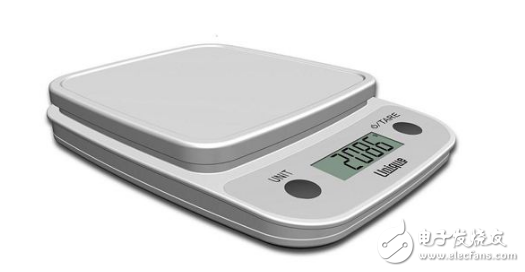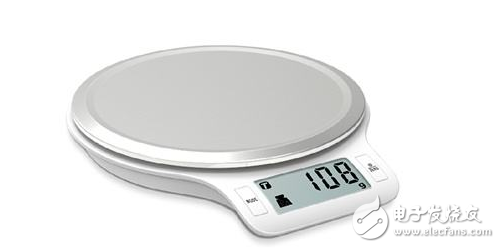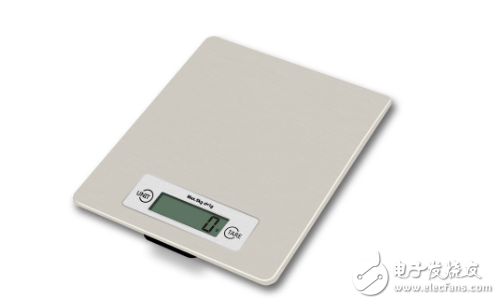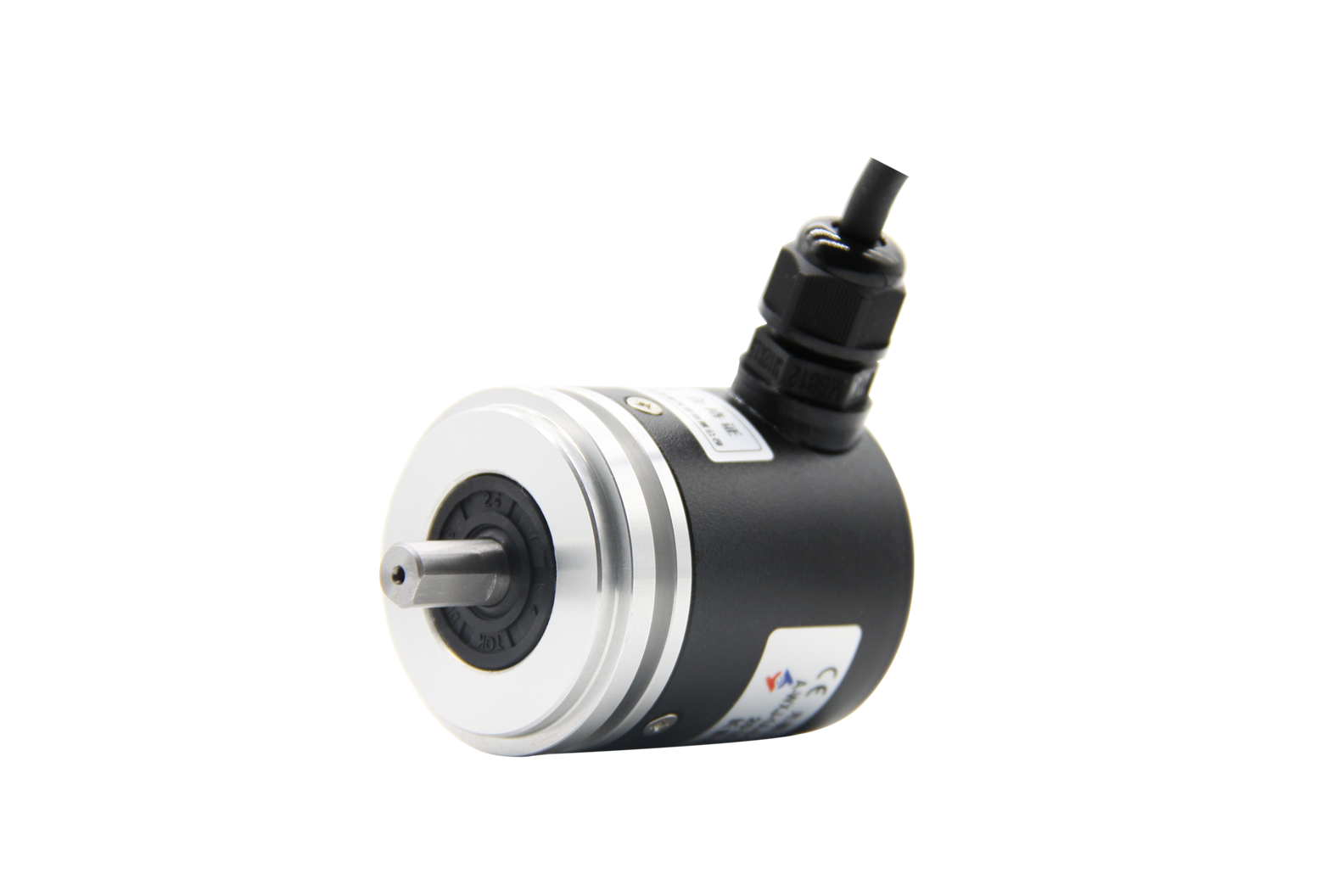The electronic scale (English name: electronicbalance) is a kind of weighing instrument, which is a tool for measuring the quality of objects by using the principle of lever balance of Hooke's law or force. According to the structural principle, it can be divided into three categories: mechanical scales, electronic scales, and electromechanical combined scales. The electronic scale is mainly composed of a load-bearing system (such as a weighing pan, a scale body), a force transmission conversion system (such as a lever force transmission system, a Sensor), and an indication system (such as a dial, an electronic display instrument). When an object is placed on the weighing pan, pressure is applied to the sensor, which deforms, causing the impedance to change, while using a change in the excitation voltage to output a varying analog signal. The signal is amplified by an amplifying circuit and output to an analog to digital converter. The digital signal converted into a convenient processing is output to the CPU arithmetic control. The CPU outputs this result to the display according to keyboard commands and programs. Until this result is shown. According to the application range of the electronic scale weighing, the electronic scale is required to have high measurement accuracy and accurate results. The parameters required by the system in the related aspects are as follows: weighing range 0-~6000g, indexing value 0.1kg, accuracy class II, power supply AC220W. The system uses STC12C5AS2 as the intelligent controller, and the load cell uses SP20C-G501 ​​resistance strain sensor, auxiliary power supply, button and digital display device. STC12C5A60S2 series MCU. The peripheral circuit design is simple, and the crystal oscillator circuit and the power supply can be normally operated in addition to the single chip microcomputer. The SP20C-G501 ​​resistance strain sensor requires signal amplification and processing during signal processing. The sensor amplifying circuit uses a two-stage amplifying circuit. The pre-stage uses a proportional operation circuit, and the latter stage uses a differential proportional operation circuit. The signal collected by the sensor is initially amplified by the preamplifier circuit. In the process of amplifying the circuit, in order to improve the suppression of the mode signal, the feedback resistor is selected by using a precision adjustable resistor. The display module uses a 1602 liquid crystal module. 1602 liquid crystal can achieve display contrast, graphic display, digital realization, can be better suited to different environments. According to the needs of the electronic scale workflow. In the process of designing a software program. The system software program is designed according to the following procedure. Initialize the system, detect buttons and devices, collect data and process the data, processor operations, and output for digital display. In the process of measurement and conversion, due to the characteristics of the hardware equipment, it is necessary to use the software foundation to achieve better processing of each measurement link, to make up for the shortcomings and shortcomings of the hardware equipment, to achieve the performance improvement of the electronic scale, the whole system design process, Mainly used nonlinear non-compensation technology, scale conversion, invalid amount processing, zero source processing and digital filtering. The nonlinear compensation technique is to make the corresponding relationship become approximate linear in the process of detecting the input and output characteristics of the victor. In the design process of the electronic scale system, it is found that the linear relationship between the input and output of the system is relatively good, and the linear interpolation method is adopted. , deal with it. The results show that the sensor input and output have a good linear fit and achieve a better effect. Scale conversion is in the measurement process, it is necessary to convert the measurement test results into the digital quantity familiar to the operator, to achieve a better human-computer interaction environment, which is conducive to the promotion and use of the product. In the electronic scale system, the output needs to be output. It is converted into information that is easy for users to view. At the same time, the sensor-converted and AD-converted signals obtained during the conversion process are a series of numbers, which can only correspond to the size of the parameters. In the post-processing process, it needs to be converted into a coin-sized value for input, display or print. If it involves calculations, you also need to convert different dimensions in the processor. The elimination of the invalid physical quantity is due to the fact that the external quality of the weighing device, etc., is also added to the effective signal when the sensor performs signal conversion. This part is not part of the measurement required to use the software, in the corresponding design process. . The method eliminates the corresponding signal, and this part of the signal can only be eliminated by software in the process. The method of elimination can use equal replacement and subtraction methods. Can effectively eliminate phase 2 of the scene. Zero drift processing is an important factor in the measurement accuracy of the scene in the design process of the electronic scale. Due to the ban on the temperature of the sensor and other factors, the phenomenon of zero instability is generated. When the measurement is performed, a zero input signal will occur. With a non-zero output signal, such errors can result in severely reduced measurement accuracy. Since the influence of zero drift error is affected by non-electrical signals or hardware, it is relatively difficult to process. The zero compensation technique is adopted in the system. In the application process, the zero drift is saved. When the measurement is measured, the zero value is subtracted from the collected data. The result is to eliminate the exact value of zero drift. This method can be used without considering the cause of zero drift. Can be better adapted to different working environments. Digital filtering technology is to suppress the interfering interference signal in the measurement process. The digital filtering method can process the low frequency signal and Debo, and reduce the proportion of the interference signal in the useful signal to achieve the reliability and authenticity of the signal. Sex. The digital filtering technique used has smooth filter, median filter and process which have received good results in practical applications. Predictive filtering, the system uses the microprocessor and sensor as the main signal acquisition and conversion, realizes the device and design of the electronic scale, and elaborates the method and process of digital signal processing. It has a good reference for general product design. Incremental Encoder,Linear Scale Encoder,Dual Concentric Rotary Encoder,Dc Servo Motor Encoder Yuheng Optics Co., Ltd.(Changchun) , https://www.yuhengcoder.com



